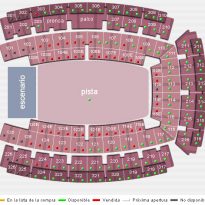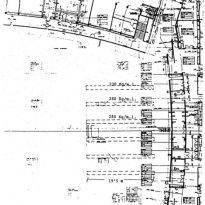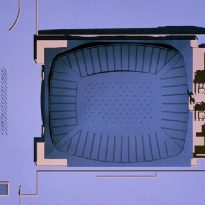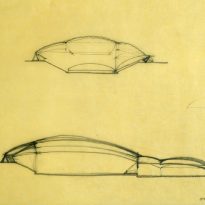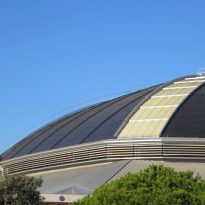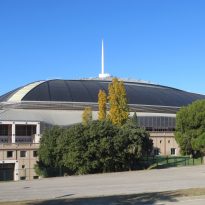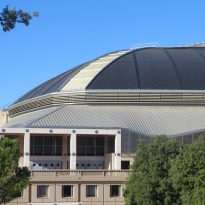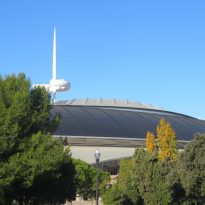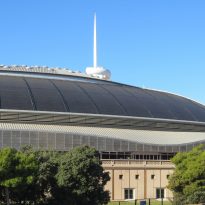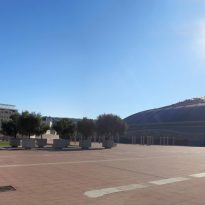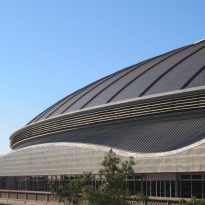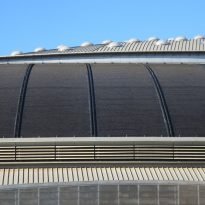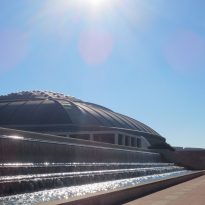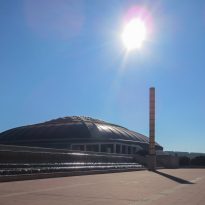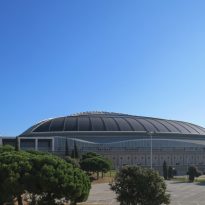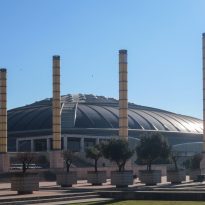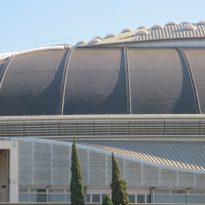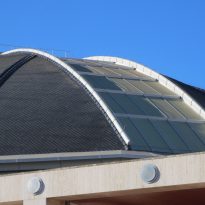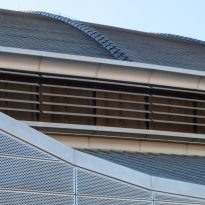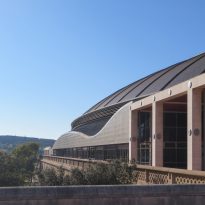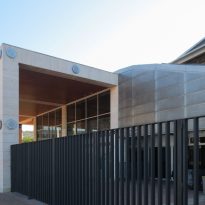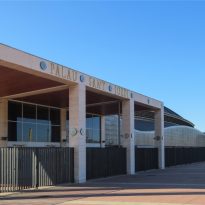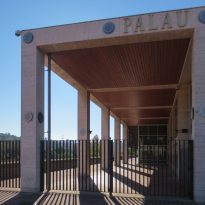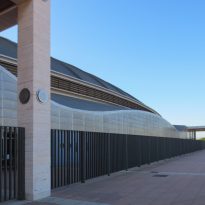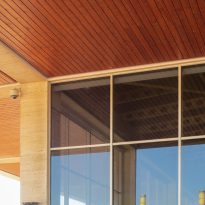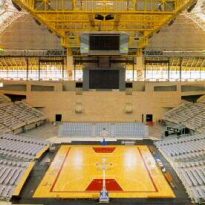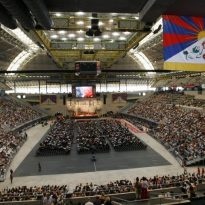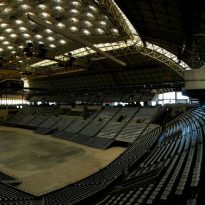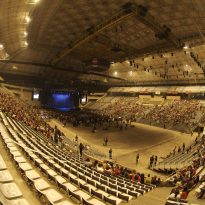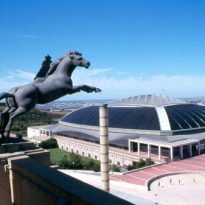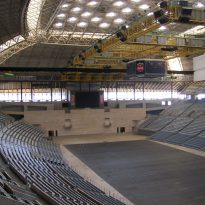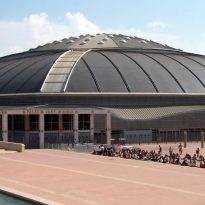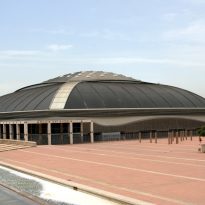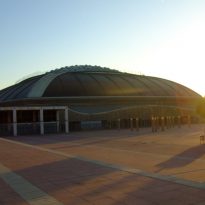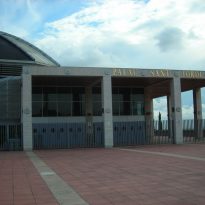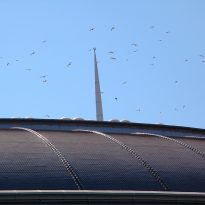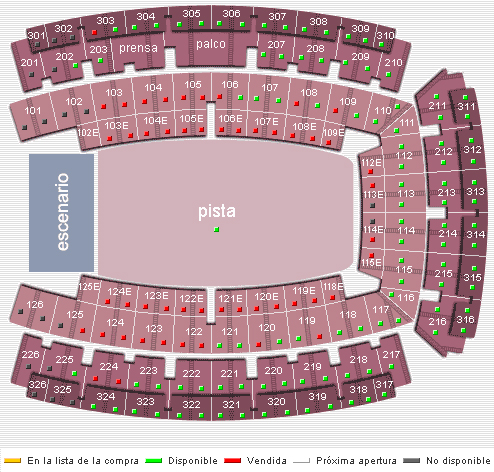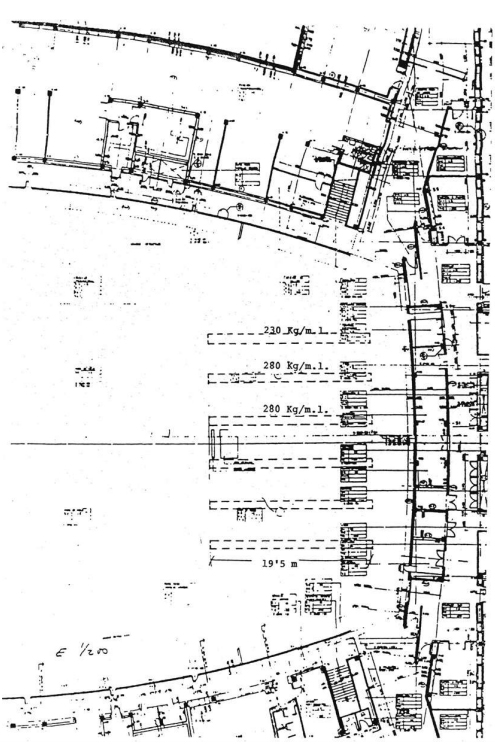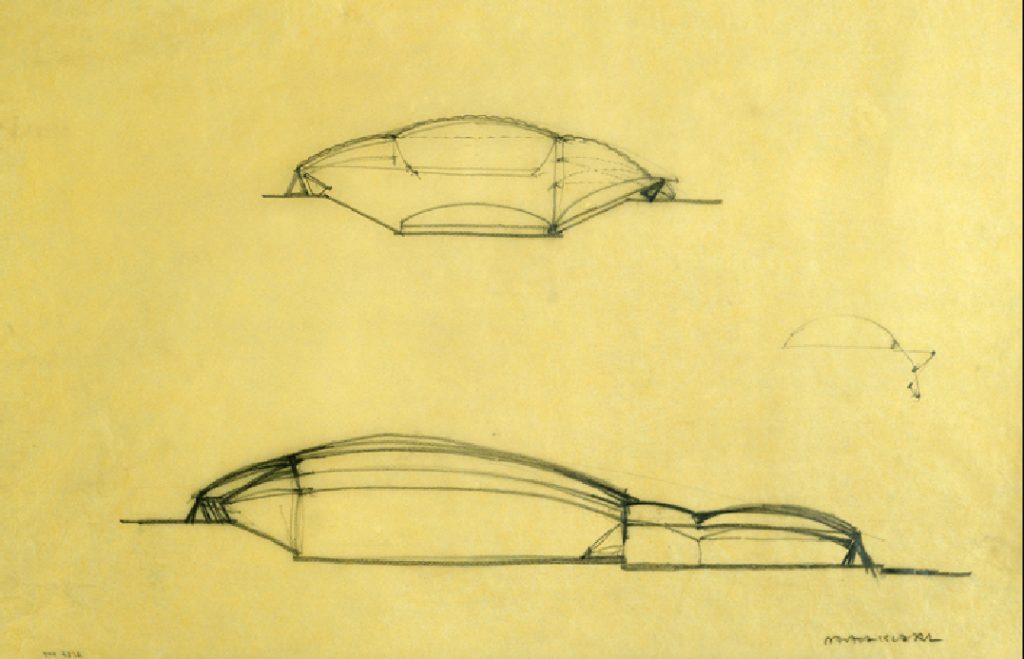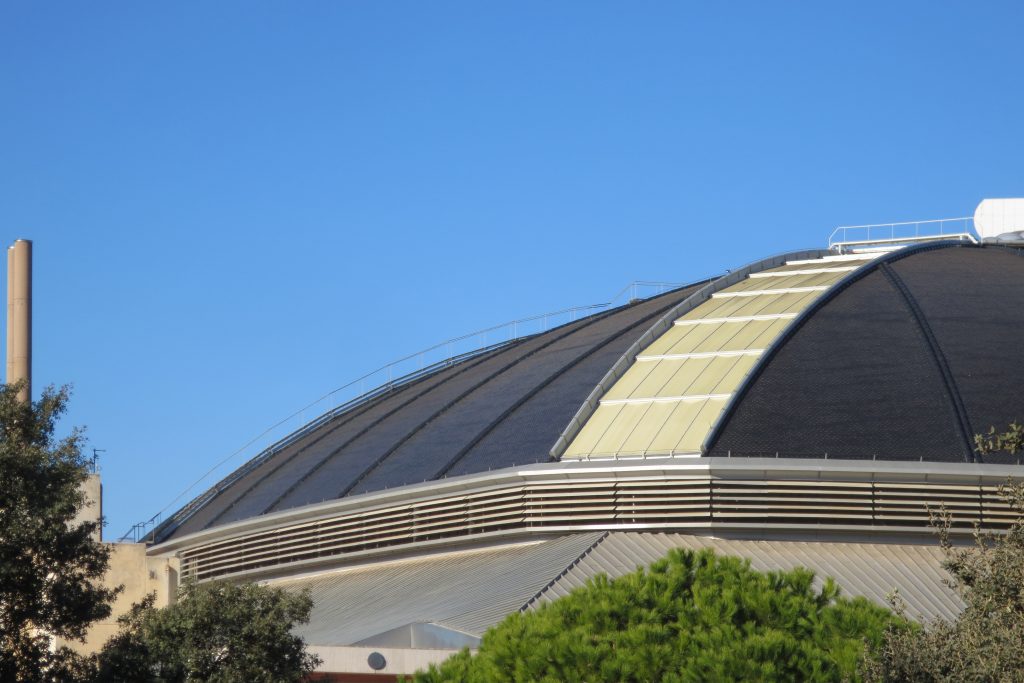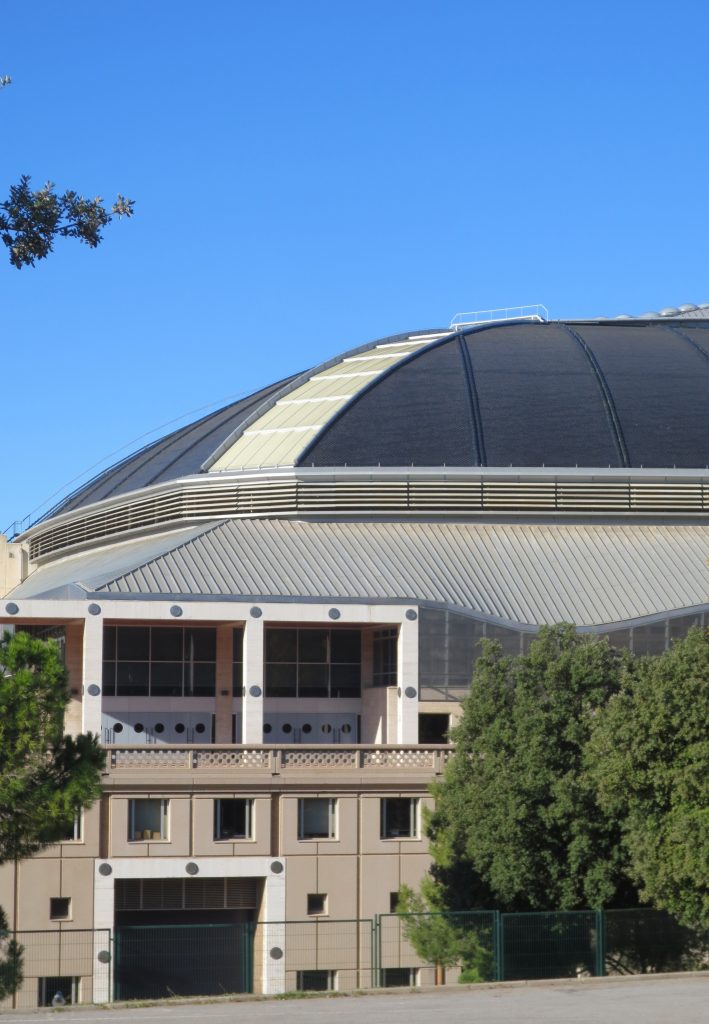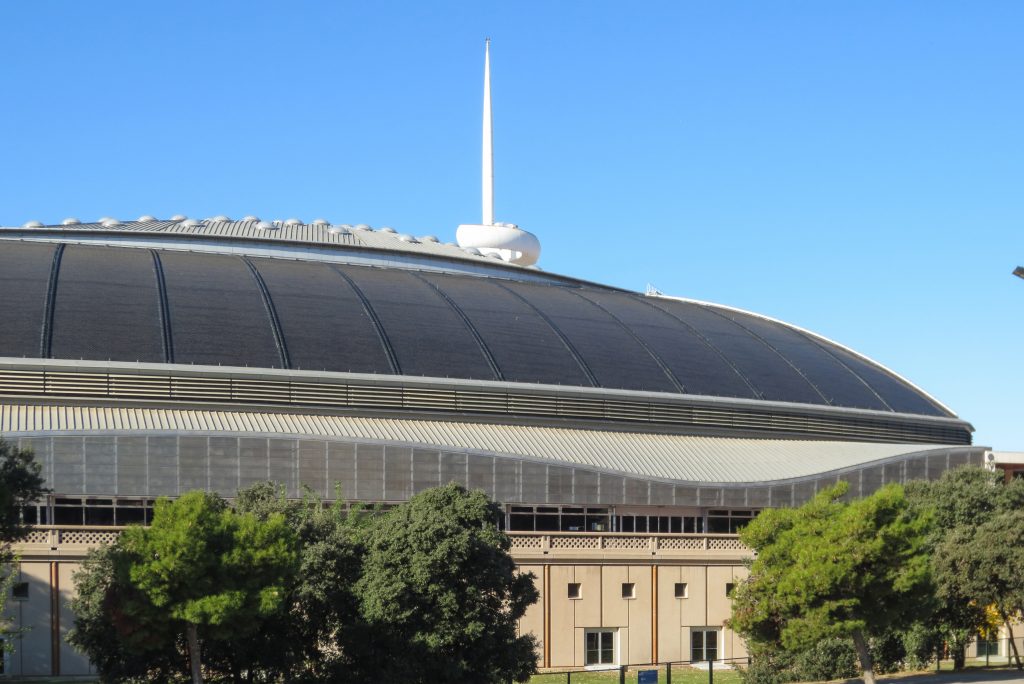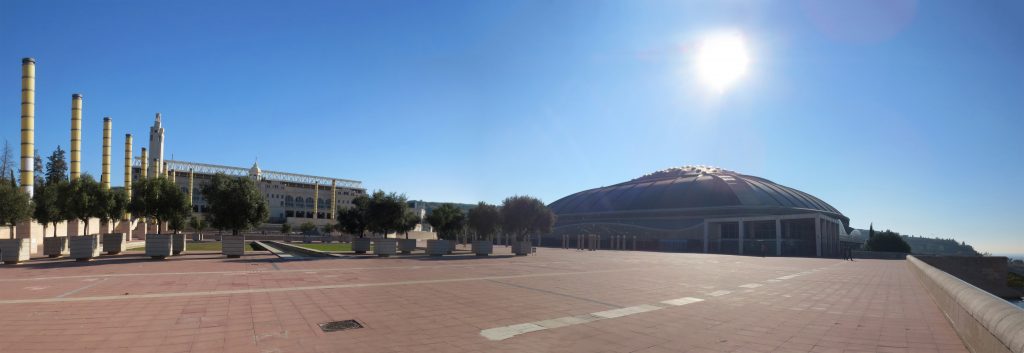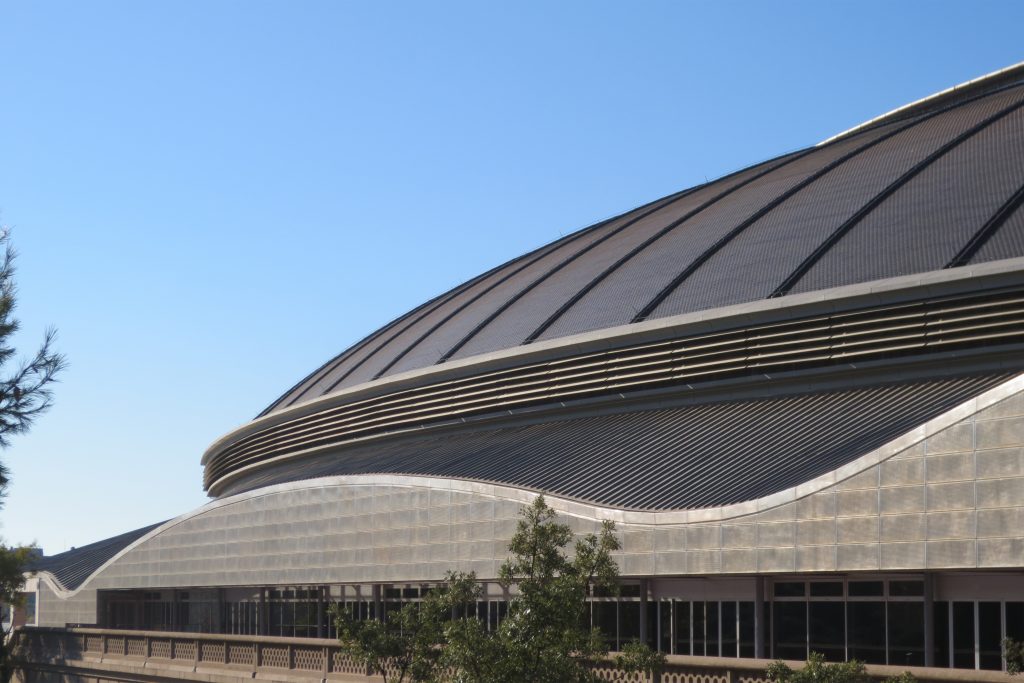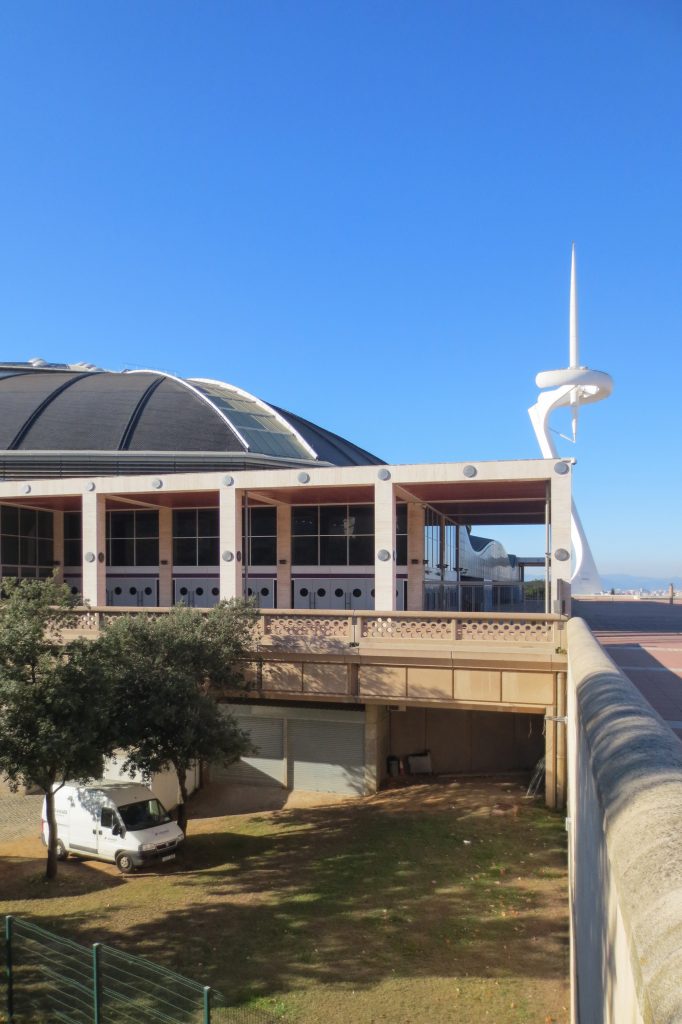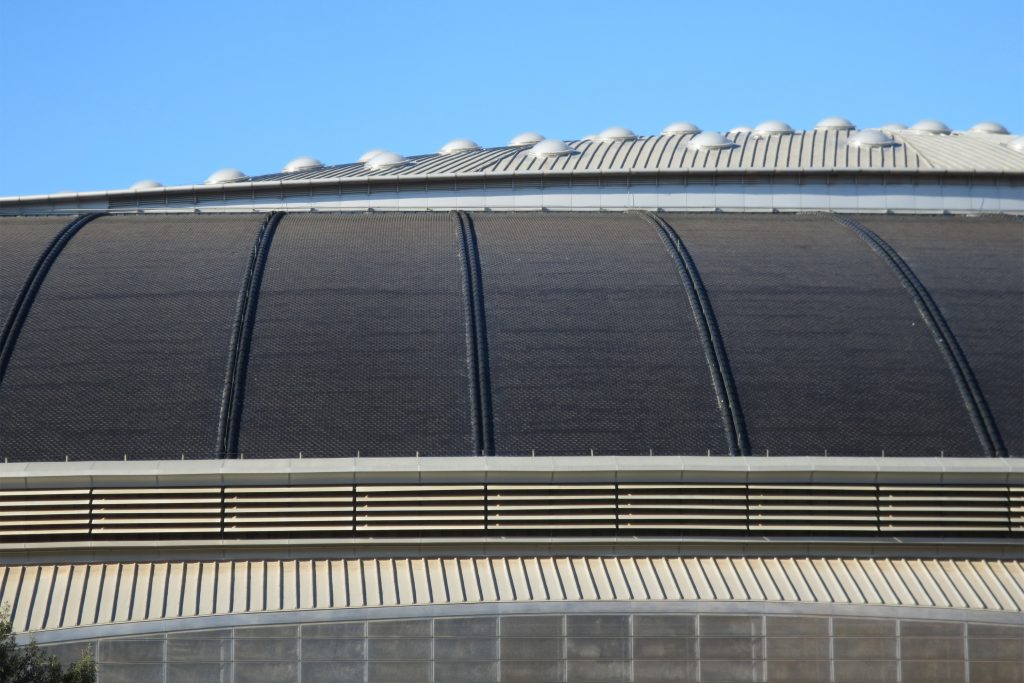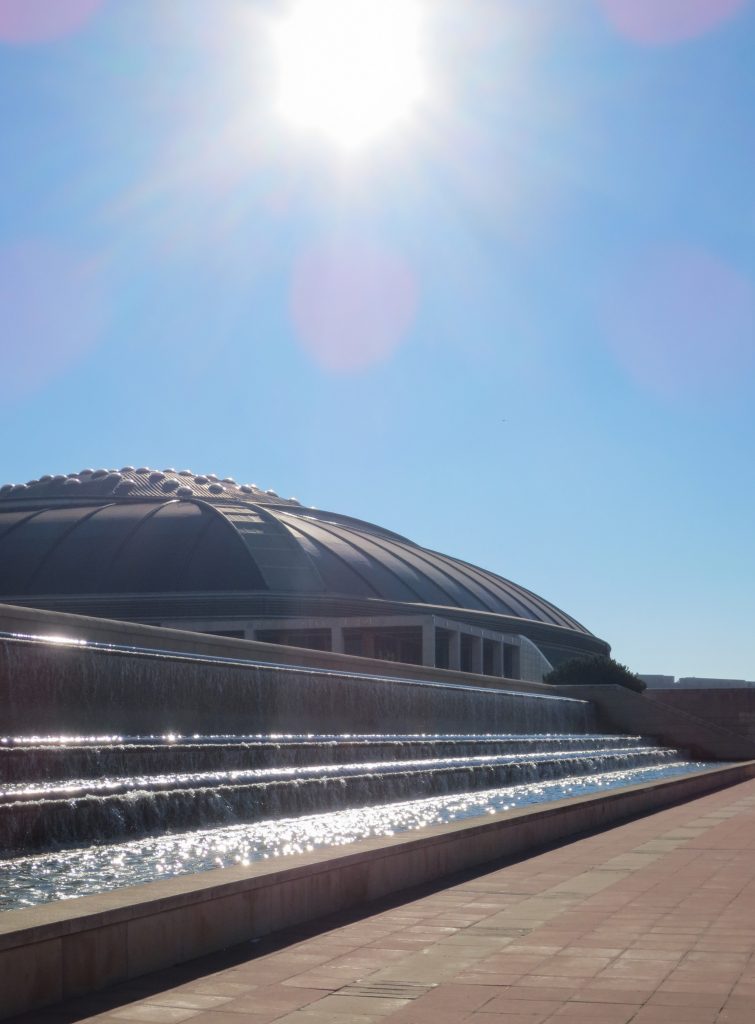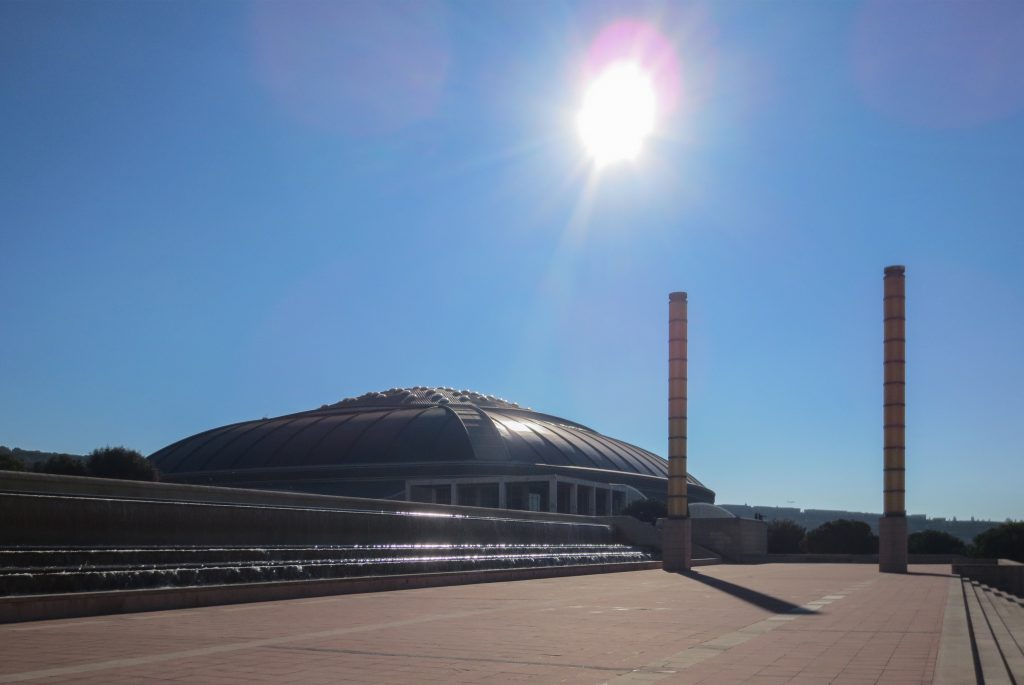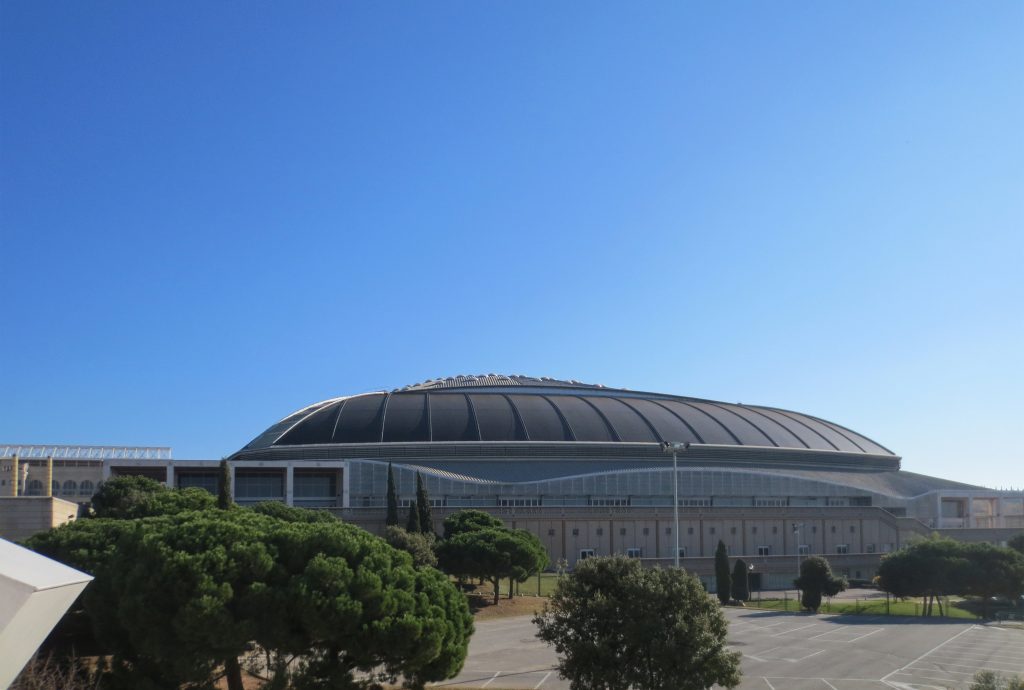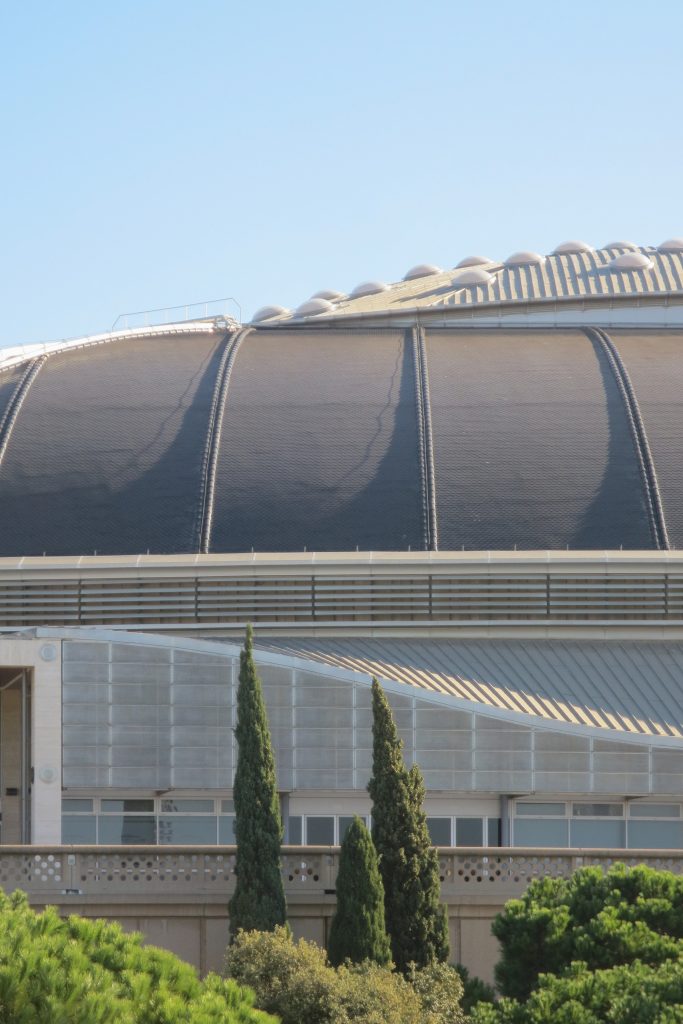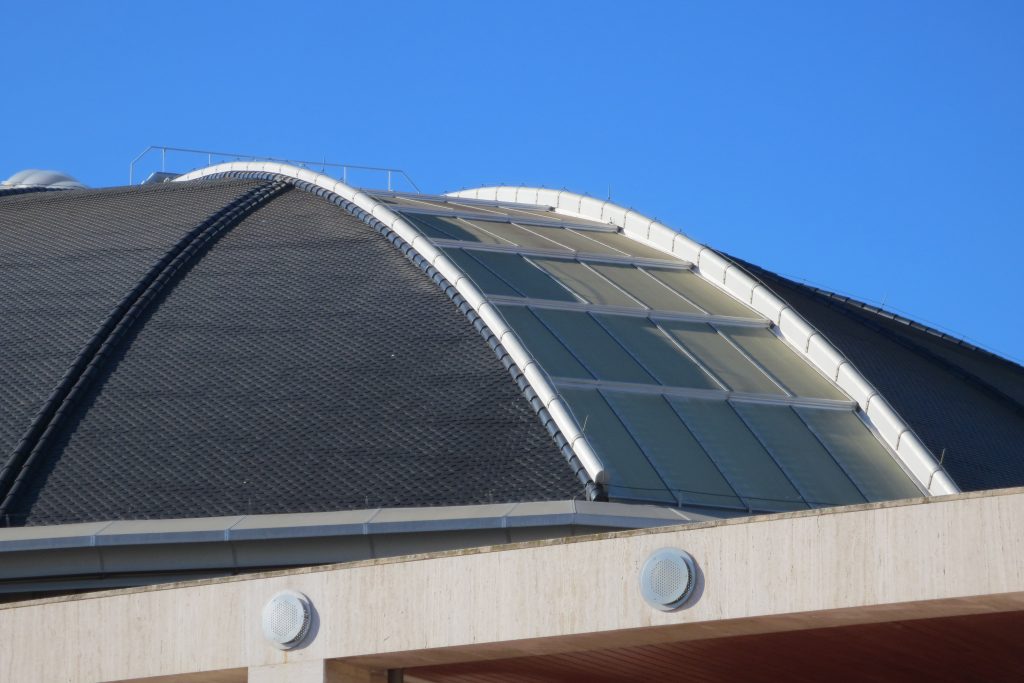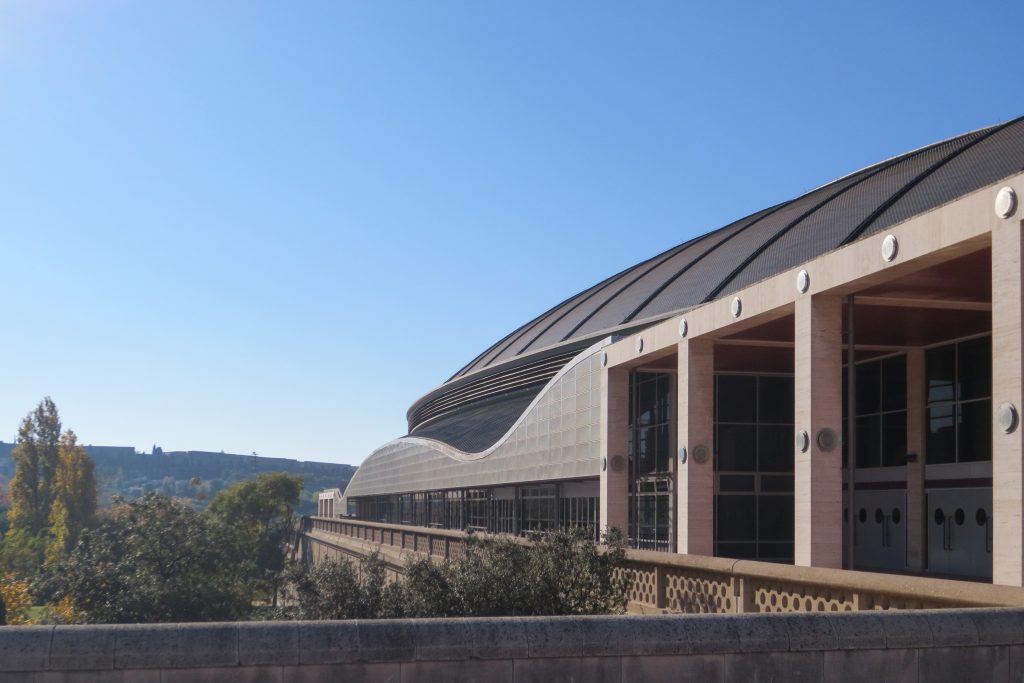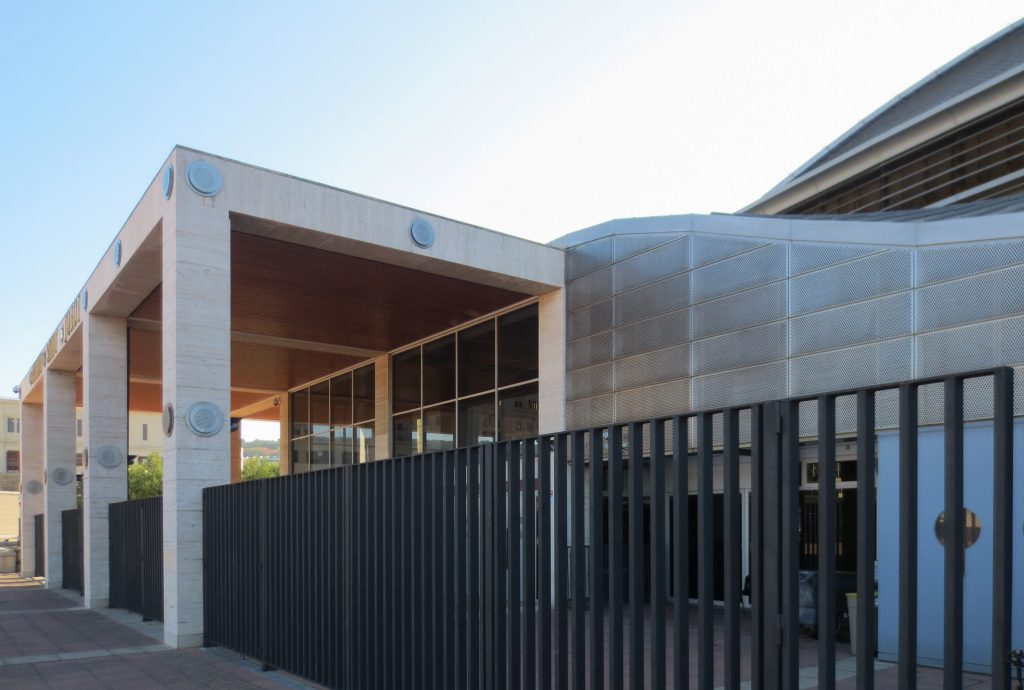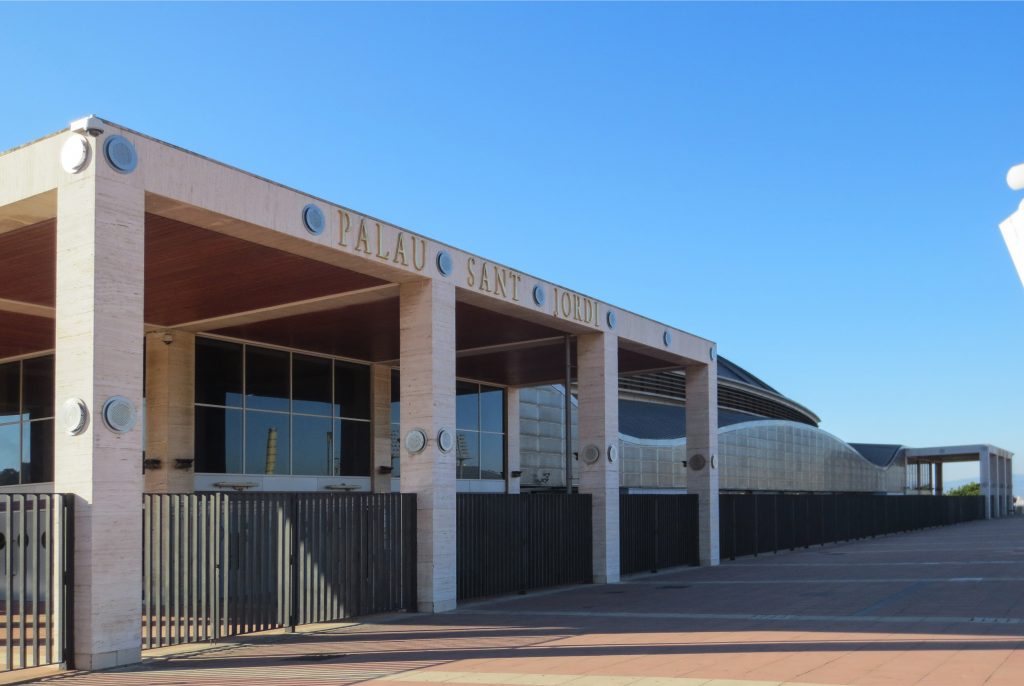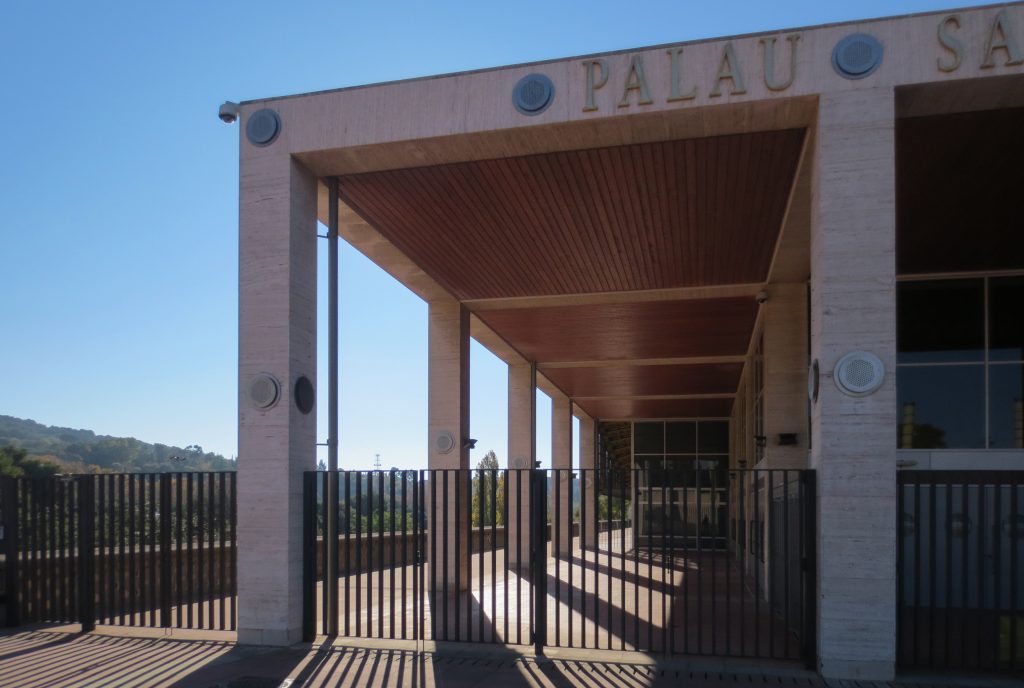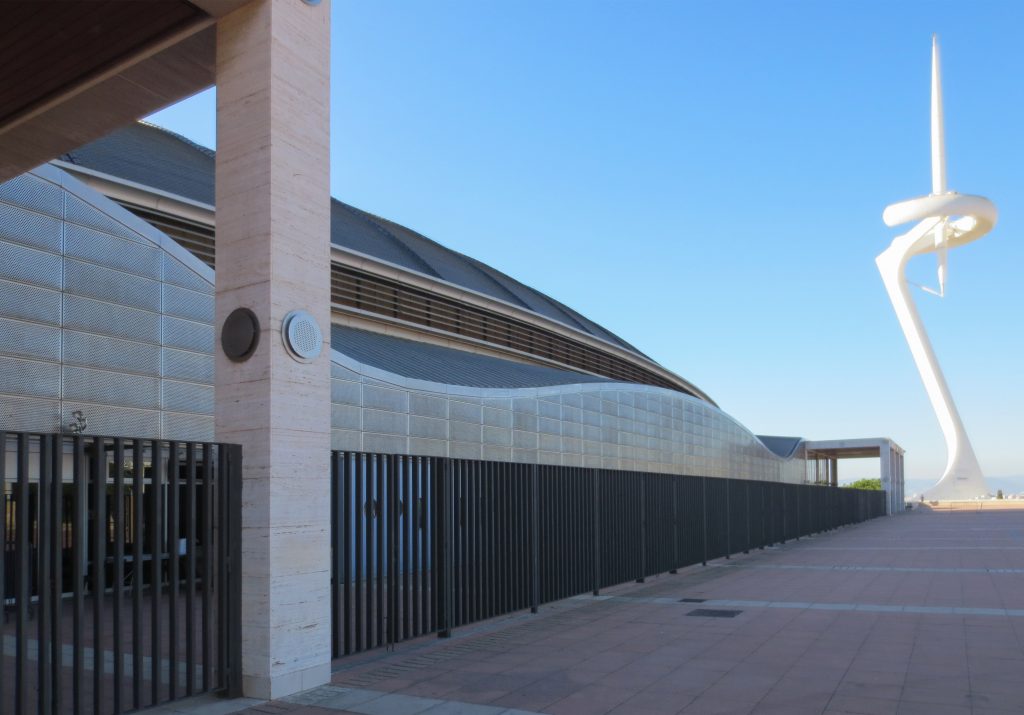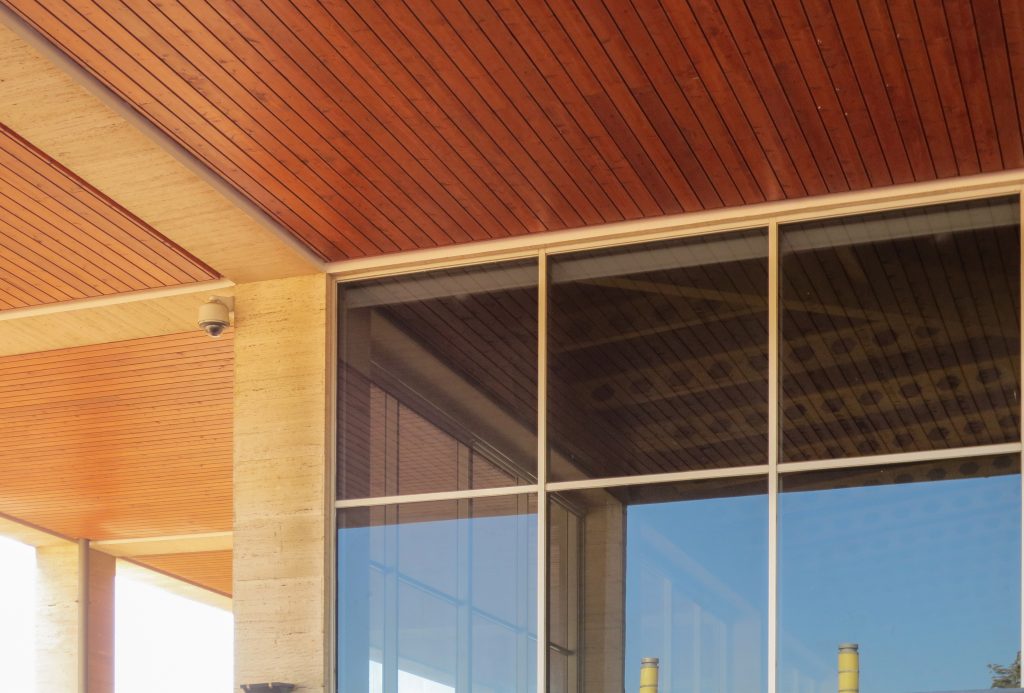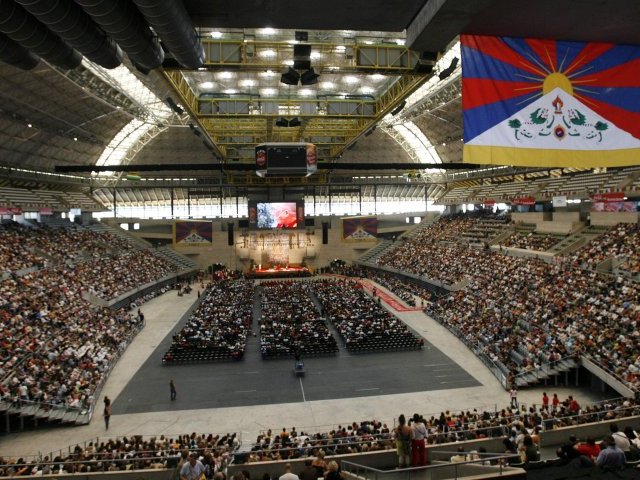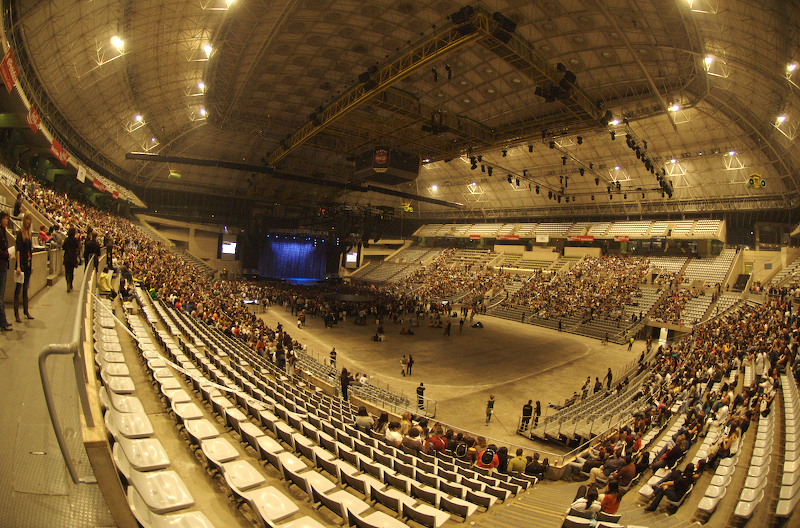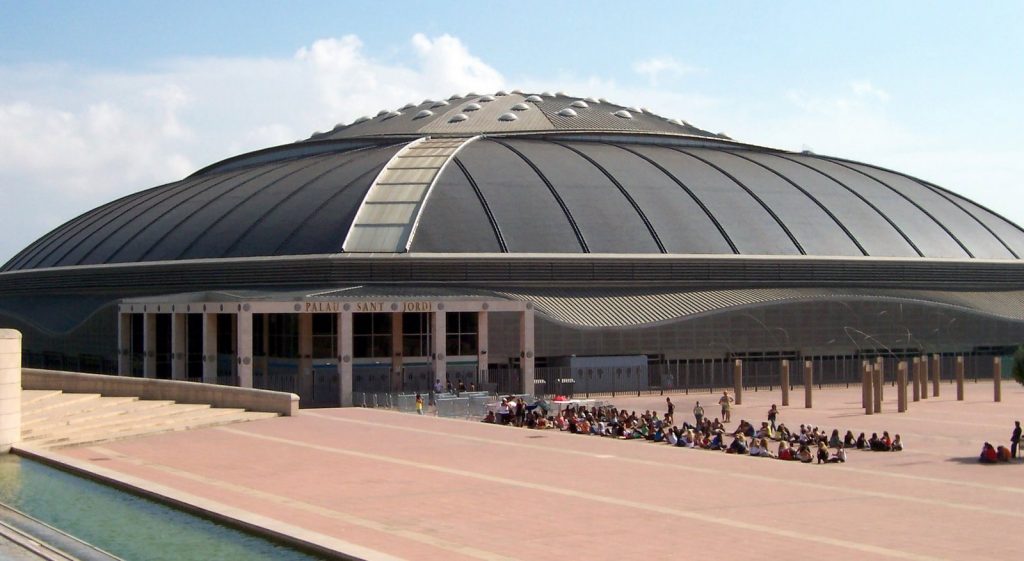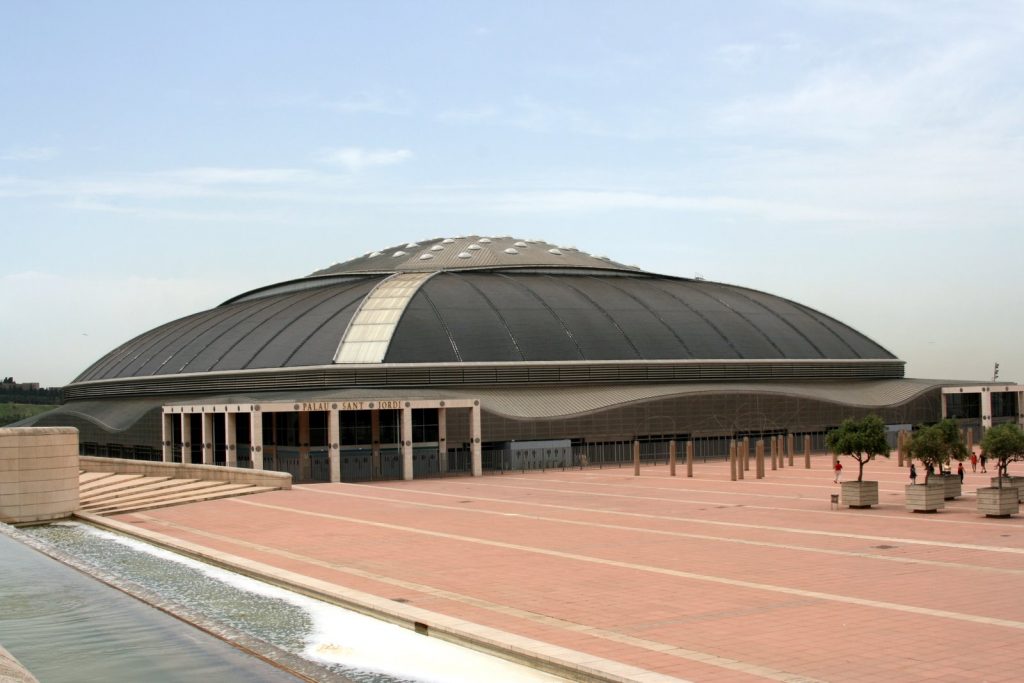Sant Jordi Palace

Introduction
The Palau Sant Jordi is an indoor multipurpose venue, built for the Olympic Games in 1992. It is the most used facility Olympic Barcelona, as it hosts all kinds of sporting events, musical and theatrical performances and social gatherings. For sporting events has a capacity of 17,000 spectators (all seated, while occupying only the two sides and the north end, since the south end no steps are enabled), while concert has a higher maximum capacity for 24,000 spectators ( enabling localities walk on the track or pit).

Designed by Japanese architect Arata Isozaki, was inaugurated on September 21, 1990, two years before the celebration of the Olympic Games in Barcelona. It is considered a masterpiece of architecture and modern engineering. Its structure and mechanized materials confer great flexibility which allows adapting the venue to meet the most varied events.
The Palau Sant Jordi was the main covered pavilion of the 1992 Summer Olympics, hosting the final of the gymnastics competitions.
Current use
The Palau Sant Jordi regularly hosts sporting events of all kinds, from basketball to motocross exhibitions, including sports unusual practice in non-specialized wards like swimming. And, on the occasion of the World Swimming Championships 2003, held in Barcelona, a regulatory pool 50×25 meters where the main evidence of the championships were played was installed.
Besides the major sports events, the Palau Sant Jordi is one of the most sought after Barcelona for the organization of musical and theatrical performances, due to its large capacity, convenience, and excellent sound enclosure locations. As an example, we mention that the American artist Bruce Springsteen chose her concert at the Palau Sant Jordi in October 2002 to edit the official DVD of their world tour. They have also performed at the Palau Sant Jordi great artists of international pop-rock as U2, Queen, Coldplay, Iron Maiden, Mecano or soloists as Shakira, Madonna, Prince, Alejandro Sanz and Joan Manuel Serrat.
Location
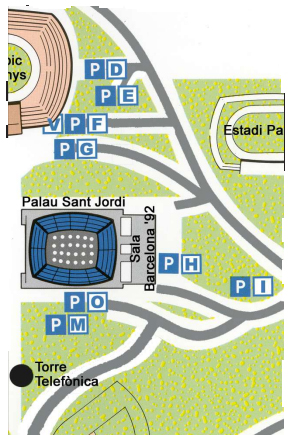
Located on the mountain of Montjuïc, in Barcelona, Spain, was built for the 1992 Olympics.
The mountain of Montjuïc is with the Tibidabo one of the two mountains that define the city. The Montjuïc rises delimiting the city from the south side. On one side the great commercial port of Barcelona, on the other neighborhoods of Parallel and Sants.
The mountain also has an attraction for the city because in lies the castle of Montjuïc that helped defend the city from attack by sea in times of invasion and was where resisted Republicans last before the city fell hands of the military regime which he governed to Spain from 1939 until 1975.
The Palau Sant Jordi is considered the jewel of the “Olympic ring Montjuic”, which also includes facilities such as Lluis Companys Olympic Stadium, the Montjuic Diving Pool or Pools Bernat Picornell
Concept
The architecture of the Japanese Arata Isozaki is characterized by two elements: the fusion of Eastern and Western elements with intensive technical and technological resources that provide their buildings featured a degree of modernity.
The Palau has a perimeter skirt dimpled cone sheet forms referred undoubtedly the Mediterranean Sea located near the enclosure behind the mountain of Montjuic and is an undisputed symbol of the Catalan capital.
Spaces
Access
The room has access to door with two door 4.06m in height for easy entry of trucks and installers and the height of level 4, from the outer esplanade public access to various doors that create different circuits according needs. At level 1 provides VIP access, a differentiated circuit and 2 parkings.
Facilities
With a rectangular plant 126x140m and total covered area of 17.640m2, plus the versatile central space with counting Palau, where competitions and shows are performed, the museum has other service spaces that enable access, outputs, tours and performances are given with the greatest possible agility and comfort. Depending on the event space center court offers:
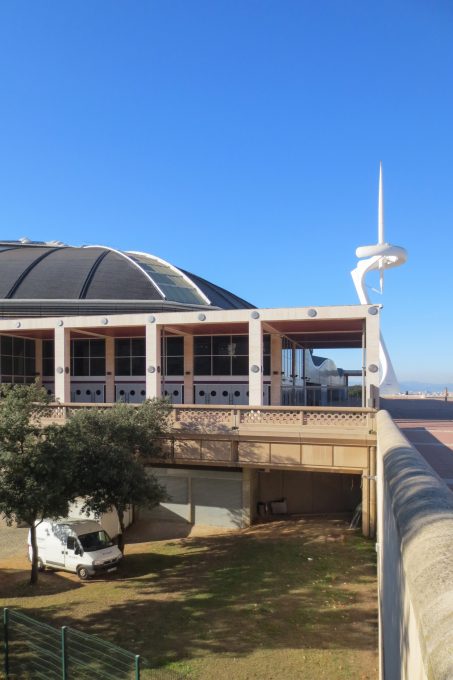
‘Track’
- Total area available track: 3500-4500 m2 without retractable bleachers.
- Width retractable steps: 6m
- Length: 97m without retractable seating, 90m with retractable seating.
- Minimum width South: 37m without retractable seating, 32m retractable seating.
- Minimum width north: 33 m without retractable seating, 32 m with retractable stands.Maximum width: 52m without retractable seating, 40m with retractable seating.
‘Gateways on stage’ : 26,85 m maximum height, minimum height 22m, can withstand an overload of varying scenery between 230-280kgs per meter.
‘Changing rooms of various sizes,’ 7.7m2 4 plus 2 auxiliary rooms of 20.25m2.
‘Spaces for catering’
‘Backstage’ : located on the first floor, 2 125 m2, 2 of 36 m2 and 24 m2 2
‘Palco VIP’ auxiliary reception rooms and separate entrances. Total 3 rooms: 1- Club Gaudí, with a free area 225m2, has a bar and is equipped with sound systems and projection. 2 – Club Isozaki, 126 m2. 3 – Club Montjuïc, 300 m2.
‘Dependencies press’ , 180 m2 properly equipped with independent circuits pagers, television and video.
Nursing ‘: at the backstage area, west side.
Special access for physically handicapped ‘.
‘Parking’ : for 5,000 vehicles near the plant, both mobile units media, VIP and assistants.
Several auxiliary rooms’ : room 280 m2, located east of the Palau Sant Jordi, 3 rooms of 30 m2 located east of Palau, 61.5 m2 1 living room south west Principal and 1 living 35 m2 south-west Main Hall
Structure
The structure of the complex was one of the key points of the work and also one of the most criticized since many professionals and part of Barcelona’s population harbored doubts about the results they give, especially as watertight enclosure.
And that cover an area of this size has never been an easy task and the variables involved in the structural calculations are such that nobody can guarantee that everything runs smoothly. To cover the impressive light the central space of the complex was chosen spatial mesh welded steel joints for being one of the lightest known structural systems. This structure 128x106m and 45m height from the floor of the sand to the top of the cover is mounted on the ground and erected using the “Pantadome” system
The roof structure has six hinges in a section, giving the appearance of instability. In fact, the structure is sufficiently stable due to the dimensional stabilizing effect.
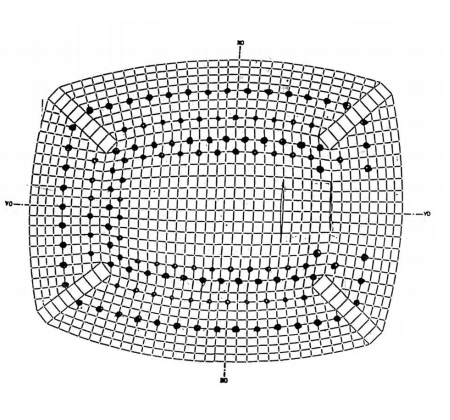
The perimeter skirt is saved with castellated steel beams placed on various pending on the sheet that gives the organic look externally supported.
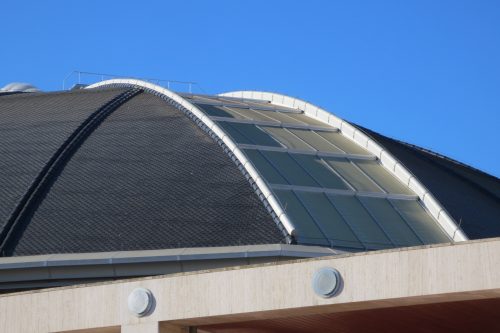
Pantadome System
So far the construction of the Palau San Jordi, engineer Mamoru Kawaguchi had only used the Pantadome System, its invention in simple forms hemispherical or barrel vaults. Both the assembly on the floor of the sections as the dimensions of curved segments were determined by the arrangement of the stands near center court. Segmented sections were joined by pins with different profiles until at one point gained, both visually and structurally a “dome effect.” In the range where the junction of the segments produces a skylight that allows continuous light beam was placed. The deck surfaces are finished with different materials, depending on the function of the spaces below, corrugated iron or ceramic tiles.
The end result of the cover shows a “Shiden-zukuri” effect, (寝殿 造) style of domestic architecture developed for palatial or aristocratic mansions built in Kyoto during the Heian period (794-1185) and subsequently became the type of architecture used for the teahouses.
- Nodes of the spatial mesh.
Below deck there are 130 nodes from which you can hang loads within certain conditions. They can be identified because they have a perforation at its bottom threaded.


